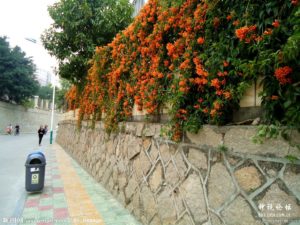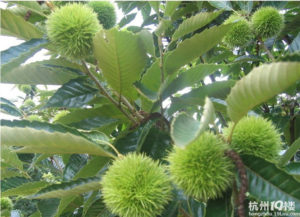Organic Matters to Soil
Soil organic matter is the material from the soil, but not soil minerals as well as it is the most active part of the soil. Organic matter is the basis of soil fertility, it can be said that there is no soil fertility if there is no soil organic matter.
Soil organic matter means the organic compounds in the soil, including carbon compounds, lignin, protein, resin, wax and so on. The soil organic matter can be formed by different matters, such as the residues of animal, plant and microbial, excreta and secretions, waste water and so on. Microbes are the earliest source of soil organic matter.
Soil organic matter content is different in different soils, some soil will have high content soil organic matter which is up to 20% or more than 30% (such as peat soil, fertile forest soil, etc.), but some soil only have low content of less than 1% or 0.5% (such as desert soil and sand Soil, etc).
Soil organic matter is the most active part of soil, which is the basis of soil fertility and is one of the important indexes to measure soil fertility.
It is an important part of the soil because it is not only an important source of plant nutrition, but also the energy of microbial life and activities.
The content of soil organic matter is closely related to soil fertility level. Although organic matter accounts for only a small proportion of the total soil, it plays a significant role in soil fertility. Usually in the same conditions or similar circumstances, the content of organic matter and soil fertility levels were positively correlated.
1, To provide nutrition for the plant
Soil organic matter contains a lot of plant nutrients, such as N, P, K, Ca, Mg, Sn, Fe and other important elements, as well as some trace elements. After the mineralization process of soil organic matter, it will release a large number of nutrients for the growth of plants; the process of humification process will generate humus,which will preserve nutrients. The mineralization process of humus also will re-release the nutrients, so as to ensure the whole process of plant growth nutrient needs.
During the process of organic matter minilization, there will be produced carbon dioxide which is an important source of plant carbon nutrition. It is estimated that the decomposition of soil organic matter and the CO2 produced by root respiration can reach 13.5 billion tons per year, which is roughly equivalent to the requirement of terrestrial plants.
It can be seen that the mineralization process of soil organic matter is  an important source of the atmosphere and plant photosynthesis.
an important source of the atmosphere and plant photosynthesis.
2, to promote plant absorption of other nutrients
Soil organic matter in the decomposition process will generate organic acids and humic acid which have ability to dissolve the soil mineral and promote mineral differentiation, is conducive to the effectiveness of certain nutrients. Some of the metal ions complexed with organic acids can be retained in the soil solution without precipitating and affecting their effectiveness.
Soil humus is a kind of colloid, has surface energy, its fertilizer performance is very significant; In addition, in terms of moisture conservation, soil humus is same with clay minerals, but the ability to preserve cationic nutrients is several times higher than that of clay minerals. Therefore, soil organic matter has a huge ability to maintain water and fertilizer.
3, to promote plant growth and development
Soil organic matter, especially the polyphenolic functional groups, can enhance the plant respiration process, improve the permeability of the cell membrane, promote the nutrients get into the plant, and promote the growth of plant roots. Soil organic matter also contains vitamins B1, B2, picolate, niacin, hormones, iso-growth hormone (β-indole acetic acid), antibiotics (streptomycin, penicillin) and so on to promote the growth of plants, and also can enhance plant disease resistance.
4, to improve the physical quality of soil
The main and most direct role of organic matter in improving the physical quality and structure of the soil so that to increase the soil looseness and improve the soil permeability and water permeability. Humus is the main binder of soil aggregates. The humus in the soil is rarely present in the free state. Most of them are combined with the mineralized soil particles and coated by the functional groups and hydrogen bonds. The aggregates with reasonable large and small pore distribution has a strong water stability, is a better structure. In arid areas, organic matter can reduce soil swelling and contraction and to prevent the soil when the drought occurs in the large cracks by improving soil viscosity.
Soil humus is a hydrophilic colloid, has a huge surface area and large number of hydrophilic groups, and the water absorption of humus are about 500%, while the clay mineral water absorption rate only are about 50%. Therefore, the organic matter can improve the water content of soil, which is important for sand. Humus is brown or black material, and then change to dark color when it is surrounded by soil particles which will increase the ability of soil heat absorption and improve soil temperature, this feature on the northern spring season is particularly important for promoting seed germination. Humus heat capacity is larger than air, minerals, but smaller than the water, thermal conductivity is middle, therefore, the soil with high organic matter content, the soil temperature is relatively high.
5, to provide energy for soil organisms
There will no biochemical process if there is no soil microbes in the soil. The number, quantity and activity of soil microbes increased with the increase of organic matter content, and there was a significant positive correlation. Soil organic matter has a low mineralization rate and does not produce a rapid stimulating effect on microbes as fresh plant residues, but provide energy to microorganisms for a long time. Therefore, the organic matter with rich soil organisms has stable and lasting fertility so that is not easy to cause the plant’s leggy.
Some of the soil animals (such as earthworms) also  use organic matter as a source of food and energy; organic matter can improve the soil physical environment, increase the degree of looseness and improve the permeability (in terms of sand is reduced permeability), so as to provide good conditions to soil Animal activities as well as soil animals themselves have accelerated the decomposition of organic matter (especially the decomposition of fresh organic matter). To further improve the soil permeability and create good conditions to soil microbial and plant growth, Vermicompost is a very good granule structure, which with the characteristics of soaked in water.
use organic matter as a source of food and energy; organic matter can improve the soil physical environment, increase the degree of looseness and improve the permeability (in terms of sand is reduced permeability), so as to provide good conditions to soil Animal activities as well as soil animals themselves have accelerated the decomposition of organic matter (especially the decomposition of fresh organic matter). To further improve the soil permeability and create good conditions to soil microbial and plant growth, Vermicompost is a very good granule structure, which with the characteristics of soaked in water.
6, active phosphorus, potassium and other nutrients
Phosphorus in the soil generally not present in the fast-acting state, and it is often present as late-retardation and slow-acting state. Therefore, the phosphorus content in the soil is low, and the soil organic matter has the reacting with the insoluble phosphorus, which can increase the solubility of phosphorus, improve the effectiveness of phosphorus in soil and the utilization of phosphate fertilizer.
In addition, soil humic acid is a kind of physiologically active substances, it can accelerate the seed germination, enhance root activity, promote plant growth. As for soil microorganisms, humic acid is also a physiological and active substances to promote growth and development. Some microbes have the function of decompose potassium, these microbial survival must depend on a large number of organic matter.
According to these important qualities and effects of soil organic matter, it is easy to see that soils with high soil organic matter content have higher soil fertility levels, which can not only provide rich nutrition for crop growth, but also have strong ability of soil water and fertilizer to reduce nutrient Loss, save the amount of fertilizer, improve fertilizer utilization. Soil with less organic matter, the condition is opposite. Therefore, we must increase the organic fertilizer, improve soil organic matter content, so as to achieve fertilizer efficiency.
The article is quoted from: http://www.fert.cn/news/2017/09/04/113222315051.shtml
